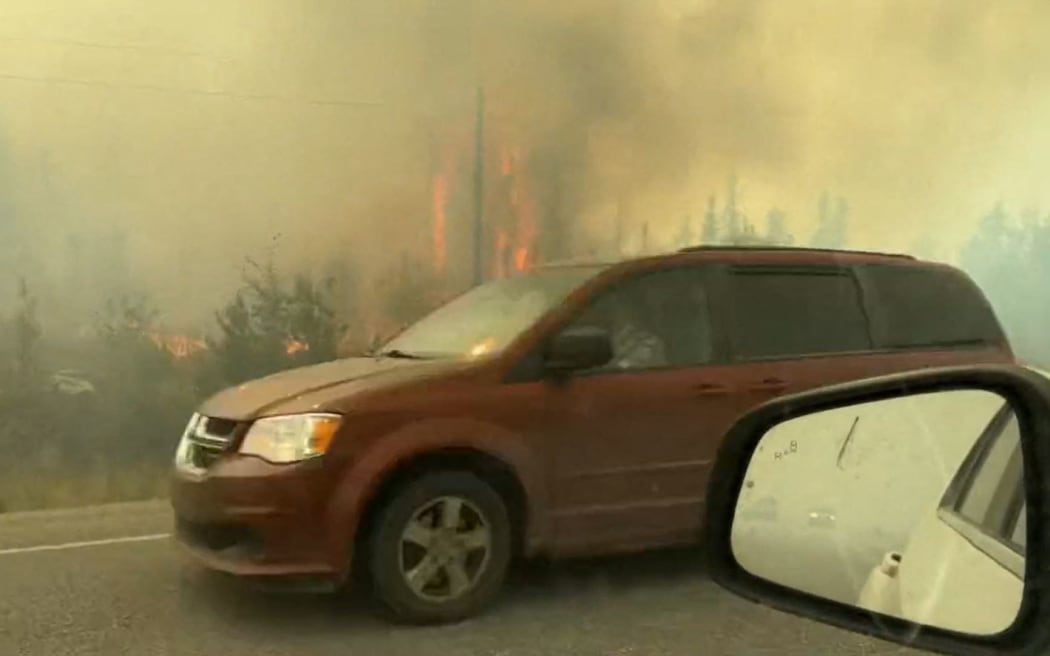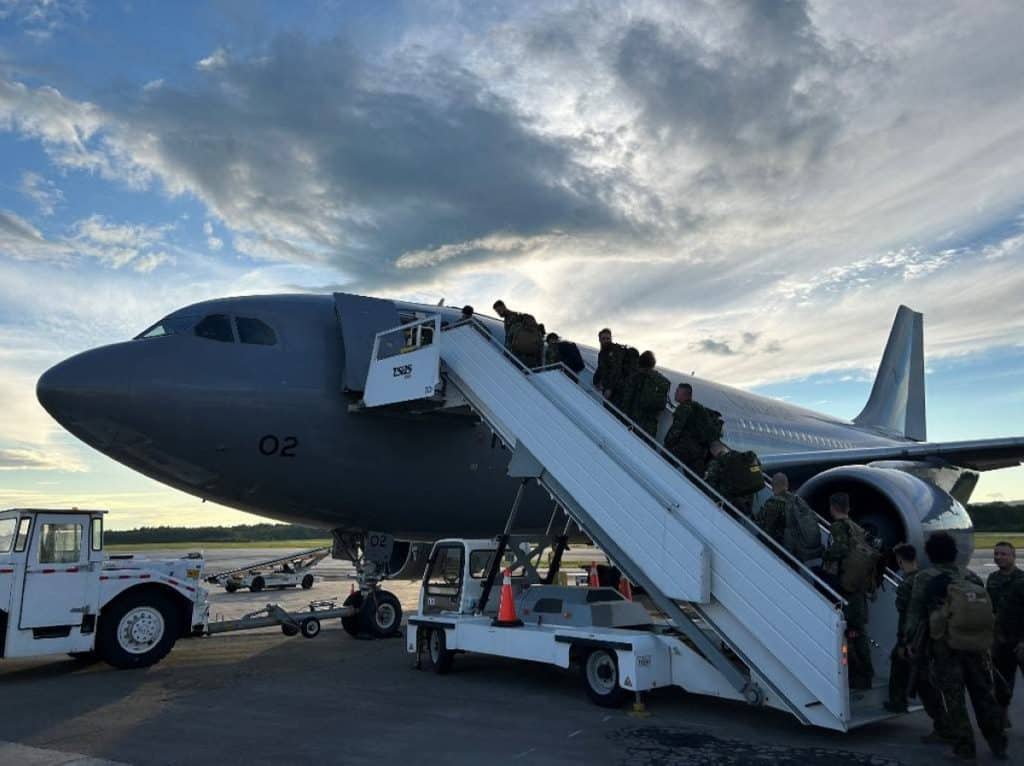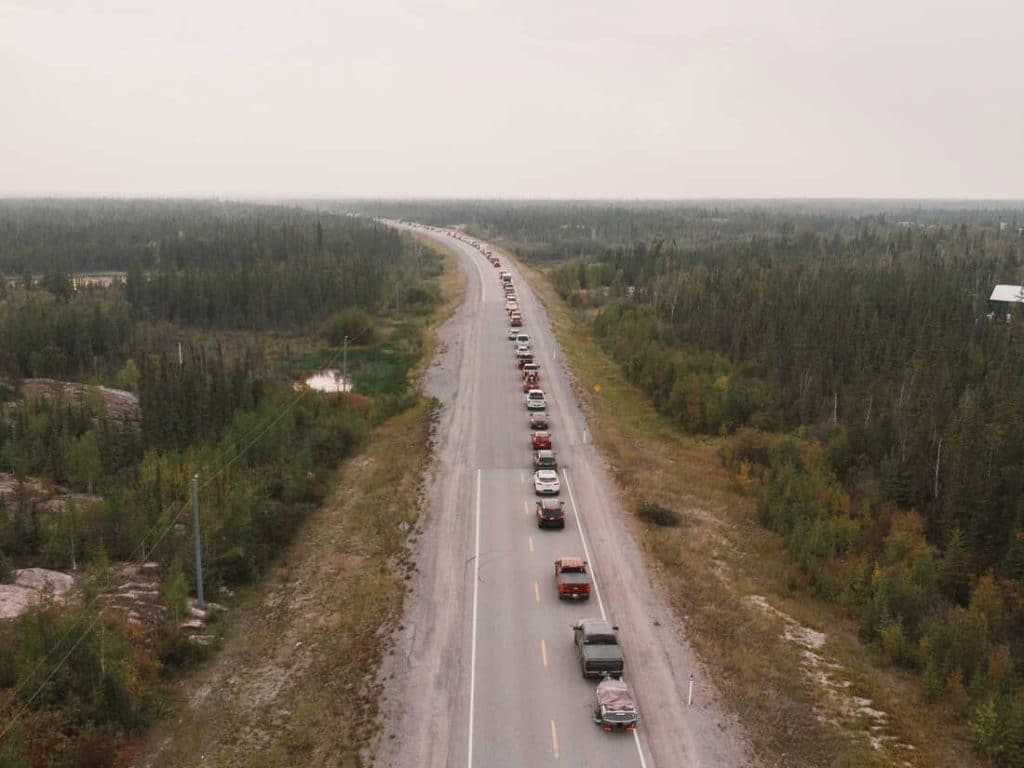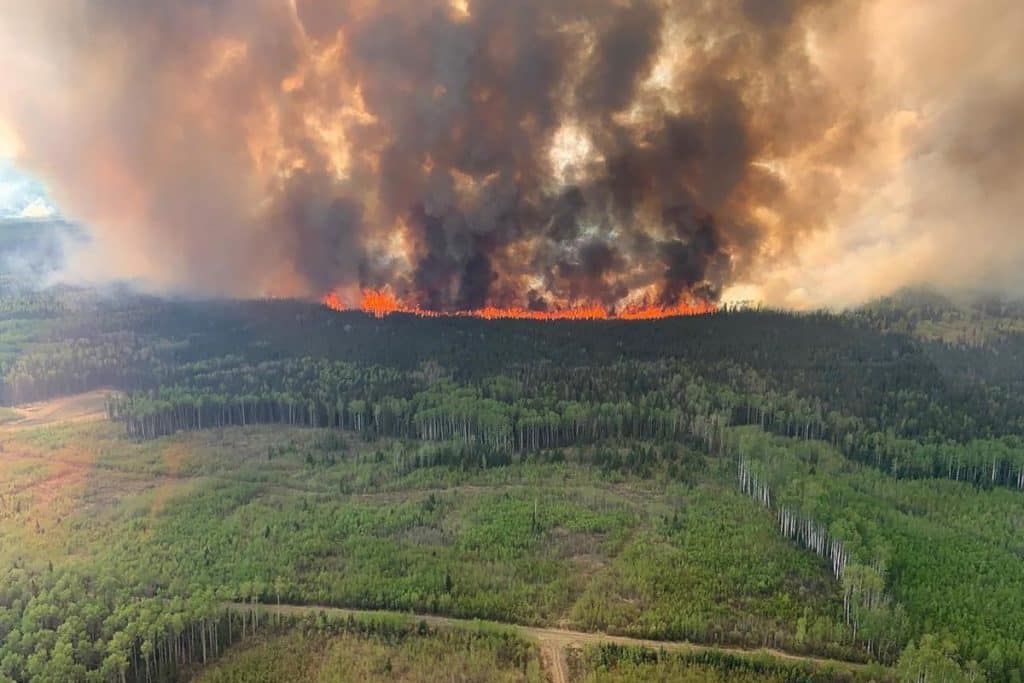On Thursday, Canadian fire firefighters fought to keep wildfires from reaching the northern city of Yellowknife, where all 20,000 residents are fleeing by car and plane following an evacuation order.
Water bombers flew low over Yellowknife, the capital of the vast and thinly populated Northwest Territories, as dense smoke enveloped the city. Officials say the slow-moving fire is currently 15 kilometres (10 miles) northwest of the city and might reach the outskirts by Saturday if no rain falls.
“Very tough days ahead, with two days of northwest to west-northwest winds on Friday and Saturday, which would push fire towards Yellowknife,” the territorial fire department told VORNews.
Officials in the Pacific province of British Columbia, which has seen particularly strong fires this year, have advised citizens to brace themselves for dangerous fire conditions.
“This weather event has the potential to be the most challenging 24 to 48 hours of the summer from a fire perspective,” wildfire service director Cliff Chapman told reporters. “We anticipate significant growth and resource challenges from north to south.”
Hundreds of people waited outside a local high school in Yellowknife to be escorted to the airport for one of five evacuation flights scheduled for Thursday to the neighbouring province of Alberta.
On Thursday, Prime Minister Justin Trudeau summoned a meeting of the Incident Response Group to discuss the fires. In times of crisis, the group of senior officials and ministers gathers.
Defence Minister Bill Blair told the Canadian Broadcasting Corporation (CBC) following the meeting that the federal government was closely watching the evacuations and was ready to immediately transport residents if land routes become impassable.
With over 1,000 active fires blazing across the country, including 265 in the Northwest Territories, this is Canada’s worst-ever wildfire season. According to experts, climate change has increased the wildfire situation.
According to officials, drought has contributed to the volume and intensity of this year’s fires, with high temperatures worsening the problem. Much of Canada has had unusually dry conditions.
The evacuation order was issued late Wednesday, according to Shane Thompson, the territory environment minister, to give people time to get out before the weather turned terrible.
“The urgency is, fire changes drastically… right now, the conditions are in our favour, but that will change on Saturday,” he told Reuters.
He estimated that around 65% of the Territories’ population of 46,000 people would be evacuated.
The infrastructure of the Northwest Territories is inadequate, with only one two-lane road connecting Yellowknife to the province of Alberta to the south. Alberta has set up three official evacuee welcome centres for individuals evacuating by vehicle, but the nearest is about 1,100 kilometres (680 miles) away in Yellowknife.
Residents must evacuate Yellowknife by noon on Friday (1800 GMT).
Yellowknife Mayor Rebecca Alty said special crews were clearing trees near the city to prevent the fire from spreading. They also intended to apply fire retardant while checking sprinkler systems, she told the CBC.
Following social media outcry over some skyrocketing costs, Canada’s two main airlines said they were adding flights from Yellowknife and capping fares.
Some of those who have been evacuated will be transported to Calgary, Alberta. Calgary’s emergency management director, Iain Bushell, stated that the city could house and feed 5,000 people.
“We are prepared to house them and help them for as long as they need,” he said during a televised briefing.
The Northwest Territories fire department stated on social media that a fire that had been threatening Hay River, a settlement of about 3,000 people on Great Slave Lake further south, had halted overnight.
So far, around 134,000 square kilometres (52,000 square miles) of land in Canada has been burnt, which is more than six times the 10-year average. This season, about 200,000 people have been forced to leave.
“The territories have never seen anything like this in terms of wildfire before… it’s an unimaginable situation for so many,” said Mike Westwick, the territories’ fire information officer, to the CBC.
The fires have also had an impact on industrial and energy output. De Beers said in a statement that its Gahcho Kue mine, some 280 kilometres (170 miles) northeast of Yellowknife, was still operational despite the evacuation of a number of personnel from local villages.
In May 2016, a massive fire burned 10% of the structures in Fort McMurray, Alberta’s northern energy-producing city, forcing the evacuation of 90,000 residents and shutting down more than a million barrels of oil output.
90% of the structures in the British Columbia community of Lytton burned down in June 2021, a day after it recorded Canada’s hottest-ever temperature.
Canada has spent more on battling and suppressing wildfires than on sustaining its firefighting people and programme since 2009.
Beijing Bars Chinese Tour Groups from Visiting Canada









